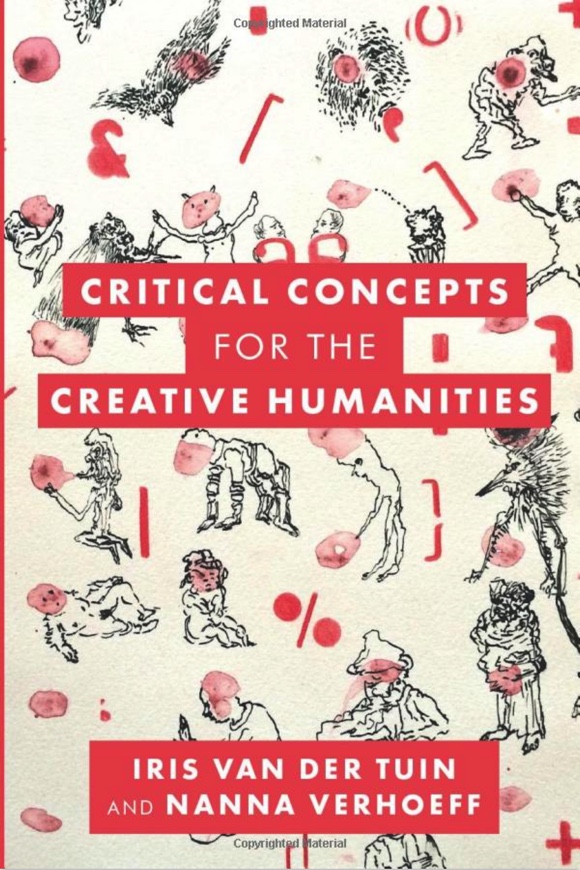Reports
Book review: Critical Concepts for the Creative Humanities by Iris van der Tuin and Nanna Verhoeff
Jonathan Jaschinski
 Critical Concepts for the Creative Humanities is a dictionary that compiles 70 concepts bearing the potential to unfold critical power and open up new lines of thought in what the authors call the “creative humanities”. They use this phrase to underline that both humanities and the “field of design, art, and culture” (xii) are involved in the continuous exchange and development of new and existing concepts. Each entry of about two pages is correspondingly roughly divided into three parts that are supposed to live up to both the precision and the creativity that the creative humanities require. First comes a definition that outlines its main ingredients and already slightly indicate some of the many paths one could go down with the concept, second, an example of a rather academic reflection about the concept’s innovative abilities, and third, an example of academics or makers putting the concept to use in more creative way.
Critical Concepts for the Creative Humanities is a dictionary that compiles 70 concepts bearing the potential to unfold critical power and open up new lines of thought in what the authors call the “creative humanities”. They use this phrase to underline that both humanities and the “field of design, art, and culture” (xii) are involved in the continuous exchange and development of new and existing concepts. Each entry of about two pages is correspondingly roughly divided into three parts that are supposed to live up to both the precision and the creativity that the creative humanities require. First comes a definition that outlines its main ingredients and already slightly indicate some of the many paths one could go down with the concept, second, an example of a rather academic reflection about the concept’s innovative abilities, and third, an example of academics or makers putting the concept to use in more creative way.
Based in a new materialist and eco-feminist way of thinking, the declared focus of the book is to demonstrate and activate what the concepts can do – as such, almost all concepts do the two tasks of (a) bringing together aspects that were treated as disconnected in modern epistemology and (b) that within a temporal unfolding in which everything is ever provisional: time and space (architecture); having-become, relationality, and open futurity (situation); observation and presence (both, and); nature, culture, and their common future (ecology). Additionally, most of the concepts are not so much related to a certain topic or perspective (ecology; architecture, architexture) but more to basic logical operations and the work of writing and reading (asterisk*, both/and, brackets (), parentheses []; dash –, hyphen -; punctuation). With the latter kind of concepts, the authors more thoroughly direct the corpus onto epistemological matters. They demonstrate how our very way of working, of how we write and read texts, implies epistemological questions. Overall, the intention of the book is clearly a dynamization of academic and artistic thinking by carving out how the concepts indeed do the job for and with us.
The book is a fun read. The many cross-references embedded in the text make the reading experience more alike to going down the Wikipedia rabbit hole than to reading an academic review –also because the authors manage to do without lengthy introductions and derivations. Already after I read a couple of entries, a kind of map manifested in my head of how these concepts may be put to use by linking them with one another, if in speculative ways. Critical Concepts is thus a valuable source of inspiration for research and art projects, making it worthwhile to return to it again and again – and above all, making it worthwhile to read it without purpose. To students such as myself, it may also serve as an unusual kind of introduction to the vast and at times confusingly diverse field of new materialist thinking.
Luckily for all of us, and important to note, the book is published under a Creative Commons license. I strongly recommend having a look.
–––––
Van der Tuin, Iris, and Nanna Verhoeff. 2022. Critical Concepts for the Creative Humanities. Lanham: Rowman & Littlefield.

